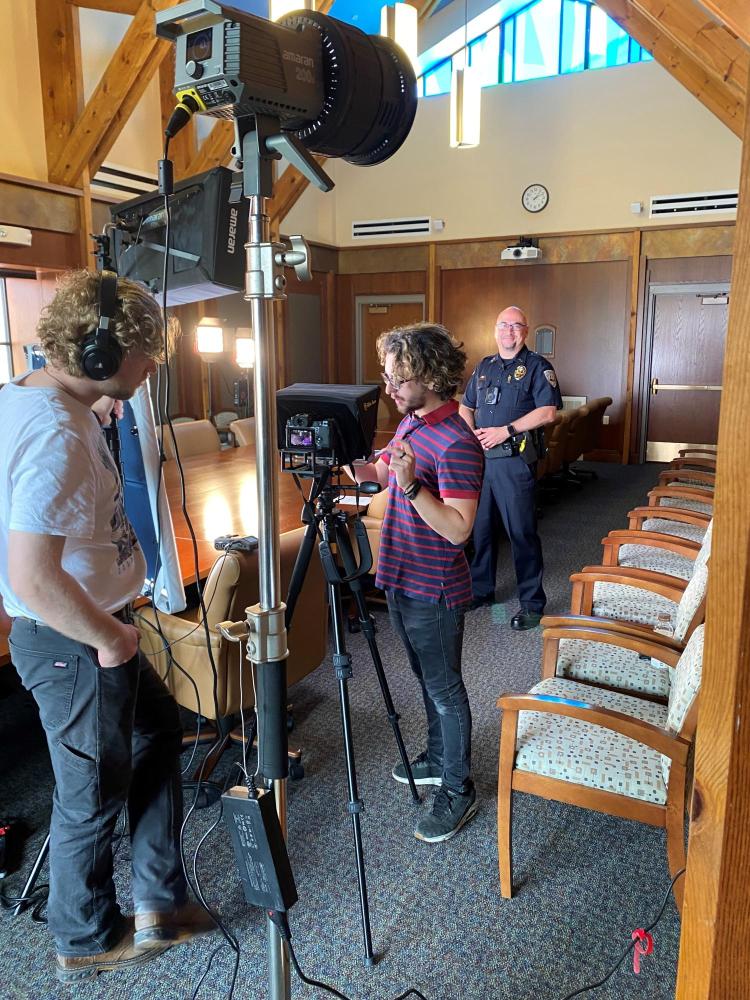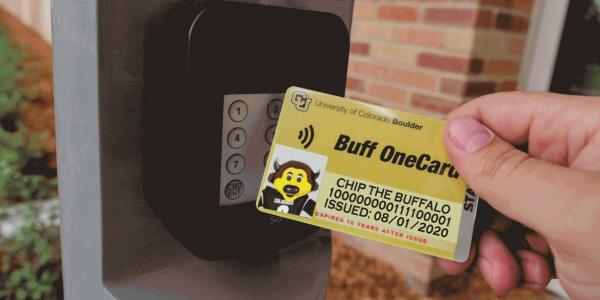
CUPD Deputy Chief Mark Heyart prepares to appear in a training video to support the launch of TV-LAP
As students return to campus in late August, CU Boulder Police and the Center for the Prevention and Study of Violence will be adding a new tool to their violence prevention toolkit. It’s called the Targeted Violence Lethality Assessment Protocol, or TV-LAP.
TV-LAP was recently developed through a collaboration between public safety officers, violence prevention researchers, and mental health professionals, and represents their continued efforts to enhance safety initiatives on campus with funding from grants from the U.S.Department of Homeland Security and the Colorado Department of Public Safety (CDPS). The CDPS grant was earned in partnership with the Office of Institutional Equity and Compliance.
The protocol provides police officers with a list of 12 questions to guide an inquiry with a person engaging in concerning behavior or making threatening statements. Prompts include expressing an unusual interest in violence or groups that support violence, investigating an individual’s history of violence or aggression, and considering other circumstances that may increase the likelihood of harm to self or others. The TV-LAP can help officers prepare an incident report and decide next steps to take with an individual of concern.
Those steps might include making a referral for a threat assessment, seeking an emergency or extreme risk protection order, enacting a mental health hold to give practitioners time to evaluate behavior, making an arrest, or contacting another agency or specialist.
The idea is to identify and evaluate behaviors and communications of concern and provide individuals with help and resources before violence occurs. “Research has found that most perpetrators of targeted violence exhibited concerning behavior or communicated their plan to cause harm to others prior to their deadly attack,” says Sarah Goodrum, research professor with CSPV.
This protocol will help officers get a more complete picture of how an individual’s recent behavior, which may include feedback from friends, family or mental health service providers, could influence future actions.
The questions and corresponding cues in the protocol mimic threat assessment tools used successfully by members of the U.S. Secret Service and Department of Education for the past 20 years. OUT Boulder County and the Anti-Defamation League also provided input on questions and prompts that could help to mitigate bias-based crimes.
The tool is similar to the Domestic Violence Lethality Assessment Program, or DV-LAP, already in use by CUPD officers. CUPD was the first college or university police department in Colorado to use the assessment tool and later won recognition for sharing the tool with other Boulder County law enforcement agencies.
CUPD Deputy Chief Mark Heyart, who consulted on content and appears in the training video, said police know that in most instances, peers and family members may have information but either don’t know how to share it or may be afraid to say something. “The goal of this new tool is to help us obtain useful information to help disrupt violence before it occurs and connect individuals to support services. We are excited to see this next step roll out,” he said.
This fall’s training will include both in-person sessions and video content to educate officers on how to apply the prompts to obtain useful information. CUPD will evaluate and adjust the tool, and then intends to share the information and training with other Boulder County law enforcement agencies in the future.



